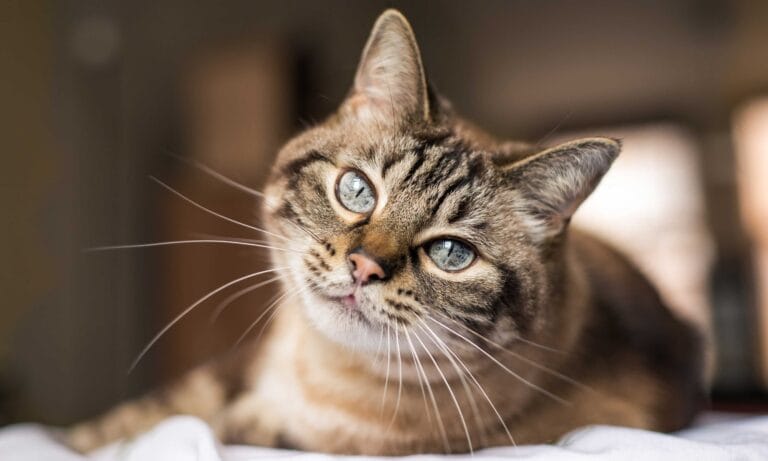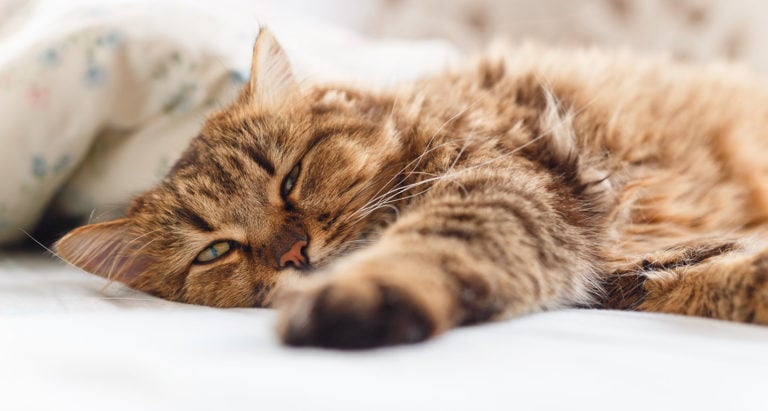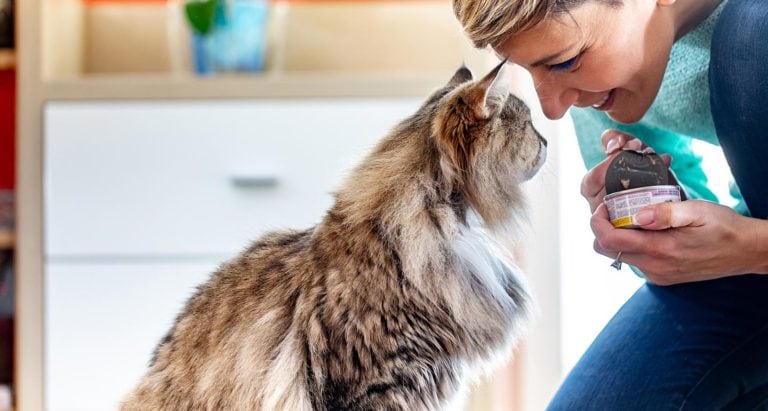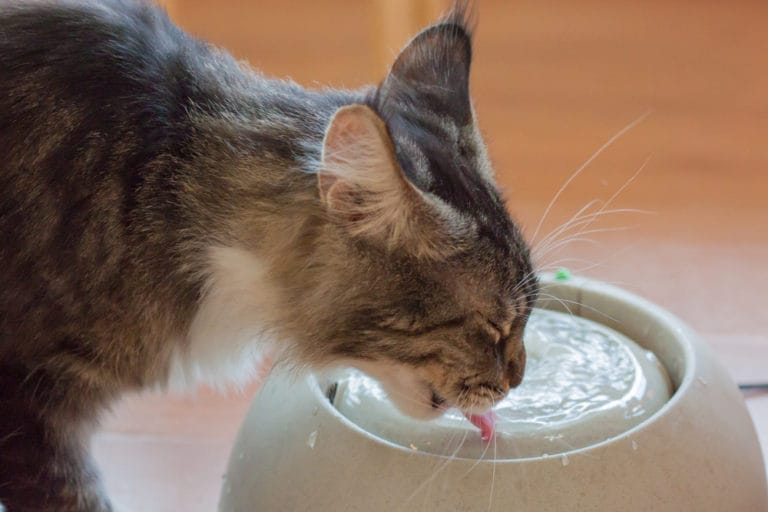As the rest of your cat ages, so do her eyes and she starts to require more cat eye care. With many cats now living into their upper teens and early twenties, old age eye problems may become evident in many felines. Yet, other cats never have an eye problem. My beloved cat Samantha, who lived to at least 22 (she was a young adult when I got her so I am not 100 percent sure of her age) never had any eye problems.
Signs of an eye problem in your senior cat may vary. Cats have a very mobile third eyelid. This is a whitish tissue that sweeps across the eye from the inner corner — much like a windshield wiper. The appearance of the third eyelid may indicate irritation to the cornea or simply a sick cat.
Other reasons for concern are sudden tearing, squinting, increased blinking or even holding an eye shut. Eye problems can go from minor to severe quickly, so don’t hesitate to contact your veterinarian if you suspect an eye problem in your cat.
Cataracts In Cats
Cataracts are much less common in old cats than old dogs. These are almost always secondary to another eye problem, such as trauma. With a cataract, the pupil of your cat’s eye will appear to be a whitish color. The lens has fibers growing into and across it, which will limit vision.
Most often, a cat will only have a cataract in one eye. That means she can still see quite well and get around just fine. Surgery is not recommended unless both eyes have cataracts and, even then, it is not commonly done. A board-certified veterinary ophthalmologist should perform surgery if you choose to have it done.
Dry Eye And Other Lifelong Irritants
More common in old cats are eye problems that are the result of lifelong, low-grade irritants that could begin as a kitten, such as feline herpes virus infections and cases of chronic conjunctivitis. Keratoconjunctivitis sicca, or dry eye, is a residual effect of herpes virus infection in many cats. The tear glands are damaged and don’t provide enough tears to adequately lubricate the cornea. These cats will have a slightly dull eye with thick, goopy discharge. If left untreated, the corneal scarring will reduce vision.
Your veterinarian will diagnose dry eye by using Schirmer tear strips. These are small strips of soft paper that are placed gently on your cat’s eye. How far the tear fluid migrates on the strip will indicate whether or not tear production is adequate. Luckily, cats with dry eye can be treated. Artificial tears, combined with cyclosporine help to increase or substitute tear production. This will be a lifelong treatment protocol.
High Blood Pressure Affects Eyes
One of the most common old cat health problems is kidney or renal failure. A secondary effect of kidney failure is hypertension. Hypertension raises blood pressure throughout your cat’s body. One of the areas affected is the delicate vasculature of the retina. Hyperthyroidism, another common senior cat health problem, can also cause high blood pressure. The hypertension causes retinal damage and may even cause full-out retinal detachment. Retinal detachment or atrophy can lead to total blindness. Night vision tends to be lost first. You may notice your cat is uncomfortable coming into a dark room. You might also notice very dilated pupils as your cat’s eyes try to get more light into the back of the eye.
If caught early, retinal detachments can sometimes be treated. Your veterinarian will refer you to a veterinary ophthalmologist. Treating the underlying hypertension is important, too!
Glaucoma In Cats
Glaucoma is an eye problem caused by the pressure in the eyeball being higher than arterial pressure. This pressure prevents nourishment reaching the sensitive neural tissues of the retina. Glaucoma is generally secondary to infection or a displaced lens. There is a genetic predisposition for it in Persians, Siamese and domestic shorthairs.
Glaucoma can be quite painful. Your cat will close her eye, squint, tear and pull up her third eyelid. This problem can develop acutely, or occur gradually. Your veterinarian will diagnose glaucoma using a tonometer to measure the IOP (intraocular pressure). Normal pressure is about 10 to 20 mm Hg. Cats with glaucoma may register at 30 to 50 mm Hg.
The sooner glaucoma is diagnosed and treated, the better the prognosis for long-term vision. Medical treatment will be required for the rest of your cat’s life.
Living With Blindness
If your older cat goes blind, there is no need to panic. A cat who goes acutely blind will be lost for a bit but will adjust. Cats who go blind over time often fool even their own families. Cats rely heavily on their hearing and sense of smell as well as vision. A blind cat should not be allowed outside except on a harness or in a safe enclosure, but will generally negotiate your house just fine. Blind cats develop a “mental map” of where furniture is, etc. Simply don’t redecorate!
While eye problems are not highly common in senior cats, they do exist. Be aware of your cat’s normal eye conformation. If you see any signs of an eye problem, contact your veterinarian.
By: Dr. Deb M. Eldredge
Featured Image: CAHKT/iStock/Thinkstock
Share:









